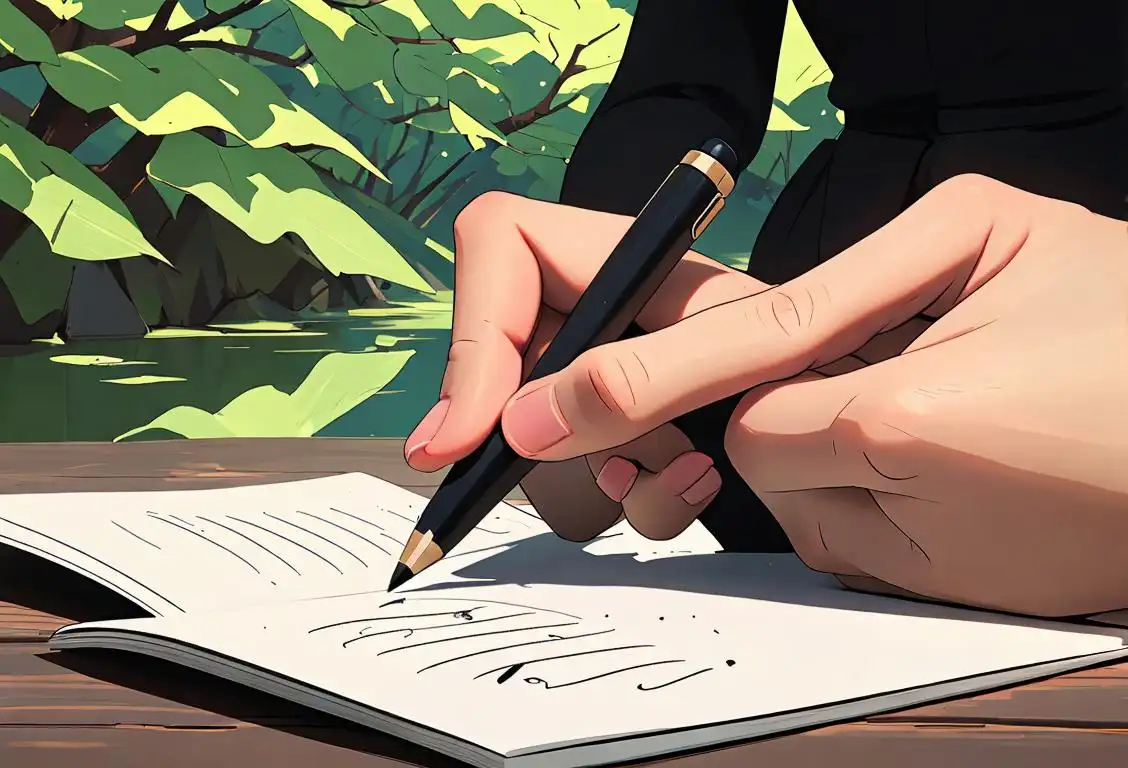National Haiku Poetry Day

Welcome to the wild world of National Haiku Poetry Day! Prepare to channel your inner poet and embrace the beauty of this ancient art form. Whether you're a seasoned haiku enthusiast or a curious beginner, get ready to dive into a lively celebration of brevity, nature, and the power of seventeen syllables.
When is Haiku Poetry Day?
It's national haiku poetry day on the 17th April.
A Brief Introduction to Haiku Poetry
Haiku poetry originated in Japan and is a form of traditional Japanese poetry. It became popular in the 17th century, shaped by masters such as Matsuo Basho, Yosa Buson, and Kobayashi Issa. Haiku is all about capturing a moment in time, usually focused on nature, and distilling it into a concise and profound expression.
Traditionally, haiku consists of three lines with a 5-7-5 syllable structure. It perfectly encapsulates the fleeting beauty of nature, highlighting seasonal changes, emotions, and observations. But in the age of the internet, poets have taken creative liberties, embracing variations while still honoring the spirit of haiku.
The Internet and the Rise of National Haiku Poetry Day
As the internet connected people from around the world, it brought together haiku enthusiasts and provided a platform to celebrate this beautiful art form. National Haiku Poetry Day emerged as a way to honor haiku, share creative expressions, and connect with fellow poets and poetry lovers online.
On this special day, social media platforms buzz with haiku-related posts, discussions, and challenges. Whether you're an aspiring poet or simply appreciate the art of haiku, National Haiku Poetry Day invites you to be part of a vibrant online community.
Join the Haiku Celebration
So, how can you participate in National Haiku Poetry Day? Here are a few suggestions:
- Write a haiku: Grab a pen and paper, or fire up your favorite note-taking app, and try your hand at crafting your own haiku. Channel your creativity, let your thoughts flow, and capture a moment in those seventeen syllables.
- Share on social media: Join the haiku conversation by using #HaikuPoetryDay on social media platforms. Share your haiku creations, engage with others, and be inspired by the varied perspectives of fellow haiku enthusiasts.
- Discover new haiku: Use this day as an opportunity to explore the world of haiku. Browse through haiku collections, read famous haiku poets, or delve into the realm of contemporary haiku literature.
- Organize a haiku gathering: Encourage your friends, family, or colleagues to participate in a haiku gathering. You can organize a haiku-writing workshop or host a haiku reading session to share and appreciate different interpretations of this nuanced art form.
Did You Know?
Did you know that Haiku is not just limited to poetry? It has also inspired other art forms, including haiku photography and haiku painting. Artists use these mediums to capture the essence of a haiku in visual form, creating a multidimensional experience for the audience.
History behind the term 'Haiku Poetry'
17th century
Roots in Ancient Japanese Poetry
The origins of haiku poetry can be traced back to ancient Japanese poetic forms, such as tanka and renga. These forms were popular during the Heian period in Japan (794-1185), which emphasized the use of concise and evocative verse. Haiku poetry emerged as a shorter form of these longer poetic styles, consisting of three lines with a syllable pattern of 5-7-5.
16th century
Matsuo Bashō Revolutionizes Haiku
The true artistry and popularity of haiku poetry began to flourish in the 16th century with the contributions of Matsuo Bashō. He is known as the master of haiku and is often considered one of the greatest poets in Japanese history. Bashō's haiku poems focused on capturing brief moments from nature or everyday life, infused with deep emotion and a sense of transience.
19th century
Haiku Gains Recognition and Influence
During the 19th century, haiku gained significant recognition and influence. This was primarily due to the efforts of haiku poets like Masaoka Shiki, who sought to modernize the form and establish it as a distinct genre. Shiki introduced new techniques and emphasized observational precision in haiku, paving the way for its popularity among a wider audience.
20th century
Haiku Spreads Internationally
In the 20th century, haiku began to spread beyond Japan's borders and gained international attention. Western poets, such as Ezra Pound and Jack Kerouac, discovered the beauty and simplicity of haiku and incorporated its principles into their own poetry. This led to the emergence of English-language haiku, which adapted the form while preserving its essence.
Present
Haiku Continues to Inspire
Haiku remains a popular and influential form of poetry in both traditional and contemporary contexts. Its concise nature and focus on capturing fleeting moments make it a favored medium for poets around the world. Haiku has also found its place in various art forms, such as visual arts and multimedia expressions, further showcasing its enduring cultural impact.
Did you know?
Did you know that Haiku is not just limited to poetry? It has also inspired other art forms, including haiku photography and haiku painting. Artists use these mediums to capture the essence of a haiku in visual form, creating a multidimensional experience for the audience.Tagged
awareness funFirst identified
17th April 2015Most mentioned on
17th April 2017Total mentions
1526Other days
Nurses Day
Former Prisoner Of War Recognition Day
Press Day
Handloom Day
Heroes Day
Memorial Day
Dance Day
Bestfriends Day
Liberation Day
Love Your Pet Day









